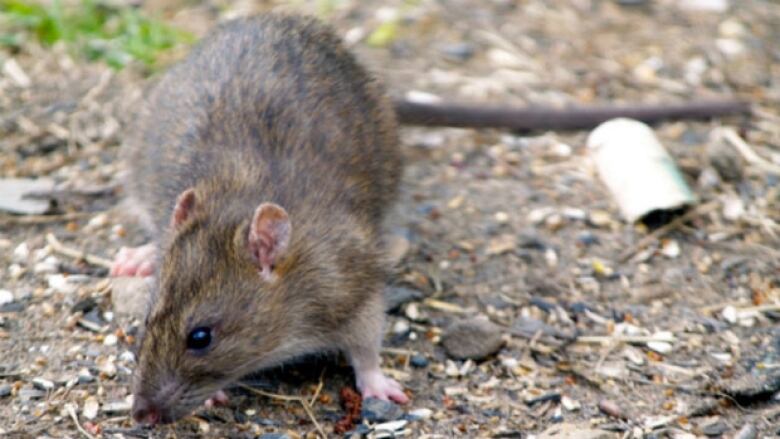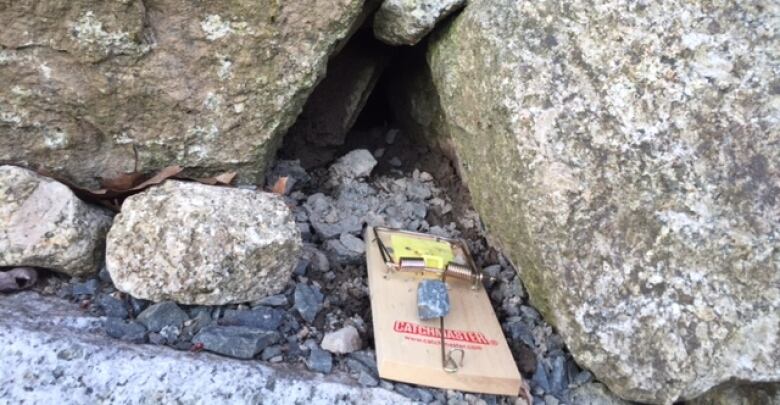Rat populations in Nova Scotia may be higher due to warm winter
Andrew Hebda of the Nova Scotia Museum of Natural History says there are up to 50 rats per Halifax city block

This past winter dropped less snow onNova Scotiathan it did the previous year thanks to unseasonably warm temperatures, but amild seasonmay have an unexpectedconsequence more rats.
Andrew Wheelock of Halifax's Truly Nolan Pest Control said "there's rats around everyone's home," since they managed to survivea not-so-cold winter.
That might not be an exaggeration.Andrew Hebda,the curator of zoology at the Nova Scotia Museum of Natural Historyestimates there are between 40 to 50 rats perHalifax city block.
For the rest of Nova Scotia? Hebdaputs the rat populationin thehundreds of thousands.He said the provincecould never be totally rat free without a program like oneoperated inAlberta.
Thatprogram includes ahotline to rat out rats. Itcosts Alberta $350,000 per year in salariesand another $50,000 inrat poison.
Understanding rats and disease
Rats can transmit pathogens to humans via fleas, feces, urine orbites. According to Robbin Lindsay, a research scientist with the Public Health Agency of Canada, those pathogens include the bacteria that causethe plague, leptospira, E. coli, salmonella,hantavirus, and tapeworms.

Luckily for people living in Canada, most of these rat-borne diseases occur in tropical regions.
But even if risk of transmission is low in Canada, it's "prudent for people to remove the rodents from the environment because you can never say that they would be pathogen free," Lindsay said.
Lindsay also points to the psychological aspect that comes with knowing that rats are living in your dwelling,and that "is also a very good reason to have them removed."
The best and worst ways to getrid of rats
The best thing to do is remove their food source and rat-proofing bydestroying and sealing off the places where they live.
If that doesn't work,the next step is to try to kill them.Wheelocksaid trapping is the way to go, but if the rats are outside, thentry rat poison or bait.
The main ingredient in rat poisonis usually an anticoagulant, which causes the rat tobleed to death.But there's a group of these rat poisons called "second-generation anti-coagulants" and they are quite potent.
John Elliott is a research scientist with Environment Canada at the Pacific Wildlife Centre in Delta inBritish Columbia. He studies the effect of these second-generation poisons on owls and other wildlife.
He said sometimes the rat doesn't die immediately, and it can get into a toxic state within a couple of days. Sinceit's bleeding internally, the rat is likely to leave its cover and shelter on a desperate hunt for water.
'Not a good thing'
"Dogs, cats, owls and hawks, and other predatorsencounter these rats, eat them and they can actually ingest the toxic dose themselves and actually even be acutely poisoned," Elliott said.
Even if they don't receive a lethal dose by eating a poisoned rat, predators can "build up a body burdenand we believe theability of their blood to coagulate is impaired. Not a good thing for a predator."
Elliott said bobcats, coyotes and even cougars can also be put at risk if they eat a poisoned rat.
Newfangled rat trap
Gerhert Gries, aresearcher at Simon Fraser University in British Columbia, is working on developing a new rat trap based on the fact that rats are afraid of new things and will avoid them.
Grieshas tried to make an inviting trapfor the ratby adding positive rat smells and sounds and of course food.

"We have put synthetic rat pup sounds into these traps as well. Smells great, good food. It smells like rat and it sounds like rat," he said.
Gries said the trap will be able to kill many rats in one trap setting.He hopes to have it on the market in the next couple of years.












_(720p).jpg)


 OFFICIAL HD MUSIC VIDEO.jpg)
.jpg)



























































































